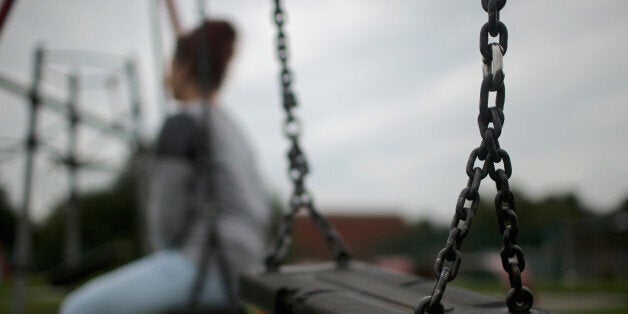
10 October marks 2016's World Mental Health Day which provides an opportunity to raise awareness of mental health issues around the world and mobilise efforts in support of mental health. Whilst it is great that we are beginning to break down the stigma around mental health issues and we dedicate one day a year to do this, I can't help but think what happens after 10 October? In particular, a child's mental health problems will not come to an end like its awareness day - quite the opposite. This issue requires an ongoing, coordinated way of thinking that makes the best use of new approaches including technology; and this is very much the case when it comes to children.

(Picture author's own)
World Mental Health Day started in 1992 but in 24 years, has much really changed? To me it seems that over all this time very few new ways of tackling the rising number of children with mental health issues have been implemented, which means the problem has spiralled during that time. As Albert Einstein once said, insanity is doing the same thing over and over again and expecting different results. In my opinion this is not a very astute way to rectify the issue. It requires something more because recent studies show that children's mental health issues are on the rise. Just a few days ago The Guardian released a report suggesting that the problem is getting worse with a quarter of a million children currently receiving mental health care in England.
As children mature, their worries do too. Growing pressures on young people no doubt account for the growing burden of mental illness in school-age children and young adults. And these pressures can include anything from the need to excel in school to the stress of looking great both in person and on social media. That's before we even consider the effect of poverty or family breakdown.
According to the report, among the 235,189 young people who were in contact with mental health services in June 2016, 11,849 boys and girls were aged five and under, and 53,659 aged between six and 10. Sadly, I am not surprised by these numbers. If anything, I think that the numbers are rather misleading and way overdue since most child mental health statistics published are over 14 years old. Whilst these figures should act as a wake-up call, I can't help worrying that as a society we are just going to continue down the same path over and over again to tackle the issue expecting it to have a different, more positive outcome each time.
At The Worrinots, we believe the key to addressing mental health issues is identification and management. As the saying goes 'prevention is better than cure' so surely educating young people earlier and providing them with coping mechanisms is a viable option? This is why I want to see more being done to tackle children's mental wellbeing in the classroom. The earlier anxieties are addressed the better the outcome for the individual, families and society. New approaches are vital in this fight. Children are comfortable on mobile devices nowadays so it make perfect sense to harness apps to help them communicate issues and concerns.
We created the Worrinots app to help children communicate their fears, worries and anxieties in a way that is easy, accessible and trusted. The app encourages children to share their fears, worries and anxieties early on before they fester and become greater issues in later life.
In fact a 'child-first' philosophy has driven every step of the design and development, as we are conscious that many children's worries are compounded by verbalising their fears. And many adults don't always know the best way to approach difficult issues, even though they mean well.
Earlier education isn't just about sharing fears however - children need context too. So the app also gives children 'WorriTips', developed with expert insight from child psychologists, to provide them with longer-term support regarding their specific worries or anxieties. The app is therefore intended to act as a better-informed solution than a 'DIY method' (like a school worry box) that some adults believe will work.
This World Mental Health Day I would encourage people to consider how hard it can be to seek help, especially for a young person. Just this week, Alastair Campbell talked openly on ITV's Good Morning Britain about the mental health issues both he and his brother have tackled over the years. He spoke at length about the stigma around such issues and how tough it is for adults to speak out, so imagine what it is like for a child.
The statistics published this week only suggest that there are more and more children needing specialist help. We need to start being more proactive, as opposed to reactive, in the way we are approaching the issue of children's mental health so we can begin working towards a society that promotes happiness and wellbeing among children. In my mind this change must start in the classroom, with teachers and safeguarding officers leading the way towards a much needed societal change. If we don't, nothing will change apart from the worrying statistics about child mental health issues, which will no doubt continue to increase.
I can only hope I write about next year's World Mental Health Day with better statistics to hand.
